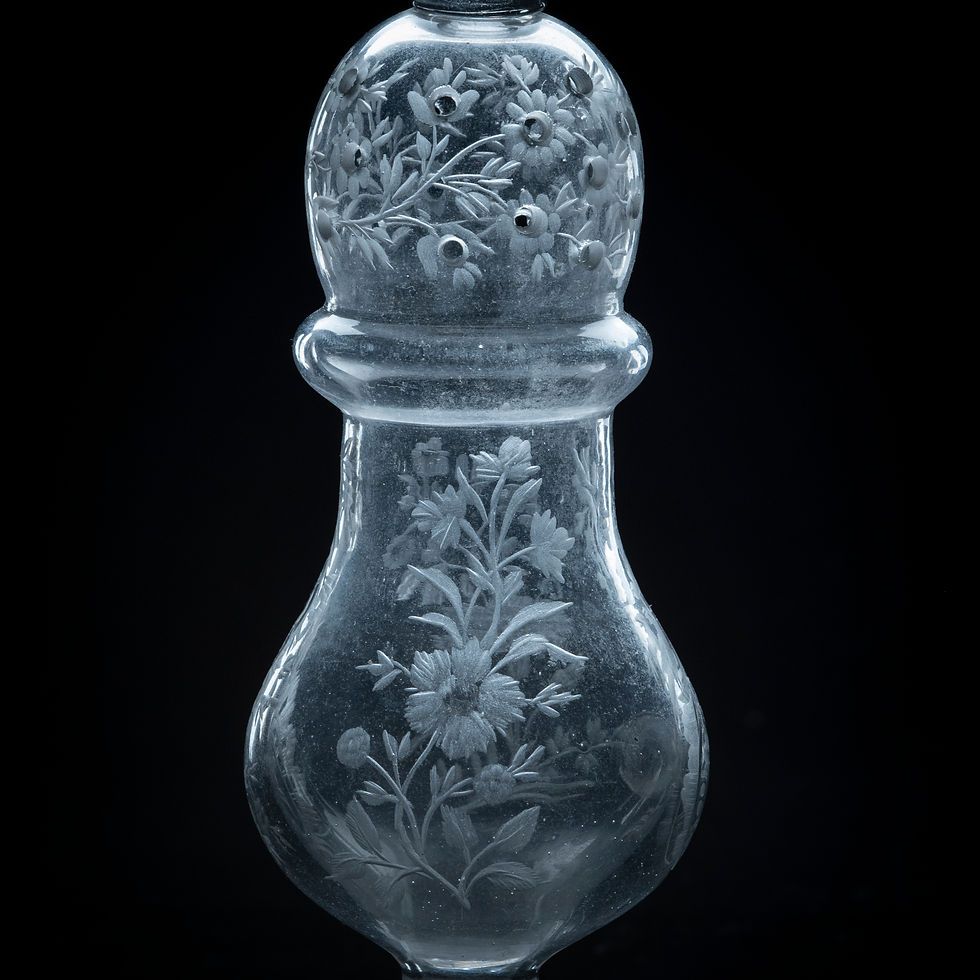Salt vessel-sugar sprinkle-butter cup
Salt vessels for the set table were not common until the 18th century.
Presumably the food was so salty before it was served that it was not necessary. Simple, round salt vessels were made at Nøstetangen, Hurdal and Gjøvik. Sugar was placed on the table in sugar bowls or in sugar sprinkles. Cans of oil and vinegar were also on the set table.
Salt was a necessity for preserving both meat and fish. On Vallø near Tønsberg, there was a saltworks that produced salt from evaporated seawater. But salt was also imported in large quantities.
Sugar was imported, but was also refined in Norway. The sugar refinery in Halden was one of the major industrial companies of the time. Production was based on sugar cane from the West Indies. Raw sugar was transported to Norway as part of the "triangle trade".
Ships sailed from Denmark-Norway to West Africa with weapons and other goods. There it was bought or captured by Africans, who were sailed to the West Indies, where they were sold as slaves to the sugar plantation owners. The ships were then loaded with sugar cane which was transported to Denmark - Norway.

Nøstetangen Sukkerskål

Nøstetangen "Fløtebolle" Klart glass.Merket under "373" Avbildet i boken til Arnstein Berntsen "En samling norske glass" Plansje 29 nr 373

Nøstetangen "SmørKander" uten lokk Weyses katalog av 1763 nr. 689

Sukkerfat fra Nøstetangen

Nøstetangen Sukkerskål

Smørkopp med lokk. Nøstetangen ca. 1760

Salt Kar, no. 902 Klart glass. Vridd glassmasse. Tre ben. H: 5 cm Diam.: 7,4 Weyses katalog av 1763 nr 901 Arnstein Berntsens «En samling norsk glass» Plansje XXX 9 – 481 – 552.

Salt-kar» Klart glass. Vridd glassmasse. Tre ben. H: 5 cm Diam.: 7,4 Weyses katalog av 1763 nr 901 Arnstein Berntsens «En samling norsk glass» Plansje XXX 9 – 481 – 552.

Marmelade krukke/tobakksdåse Med løv og lenker. De spesielle føttene er de samme som ble anvendt på salt karene.

Sukkerskål. Klar, svakt grålig glassmasse Høyde 7cm. Diameter 11,5cm Arnstein Berntsen "En samling norsk glass" Plansje XXXV nr 104

Stor sukkerskål Klar, svakt grålig glassmasse. Vridde linjer i glassmassen. Høyde 8,8cm. Diameter 11,8cm Arnstein Berntsen "En samling norsk glass" Plansje XXXV nr 121

Sukkerdrysse. Gravert blomsterdekor. Dryssehullene omgitt av graverte blomsterblader. Høyde 18,8cm




Sukkerdrysse med sølvlokk. Hva glassene forteller...og litt til side 112 trolig fra Sverige

Nøstetangen Dessertskål

Marmeladekrukke/Tobakksdåse. Krukke med lokk. M�ørkt blått glass. Tre føtter. Løkformet lokk-knapp. Høyde 18cm